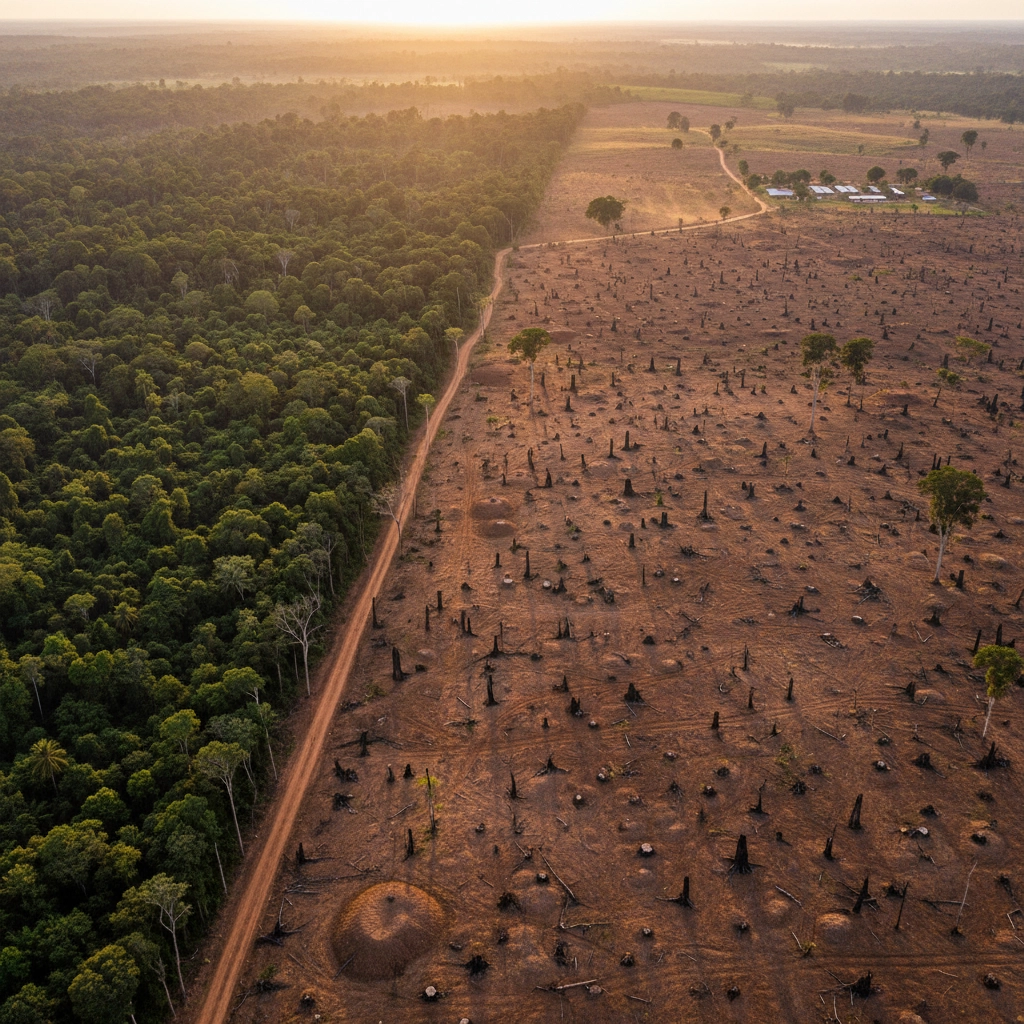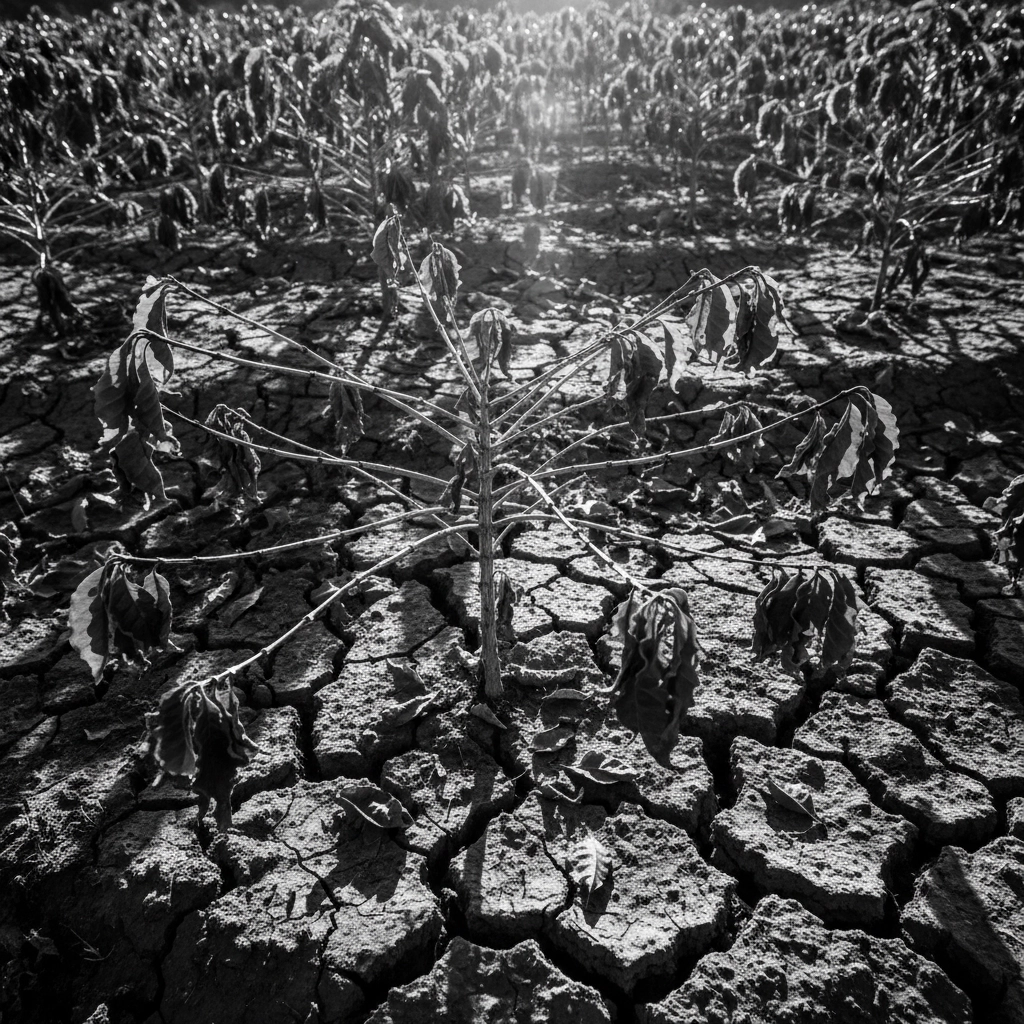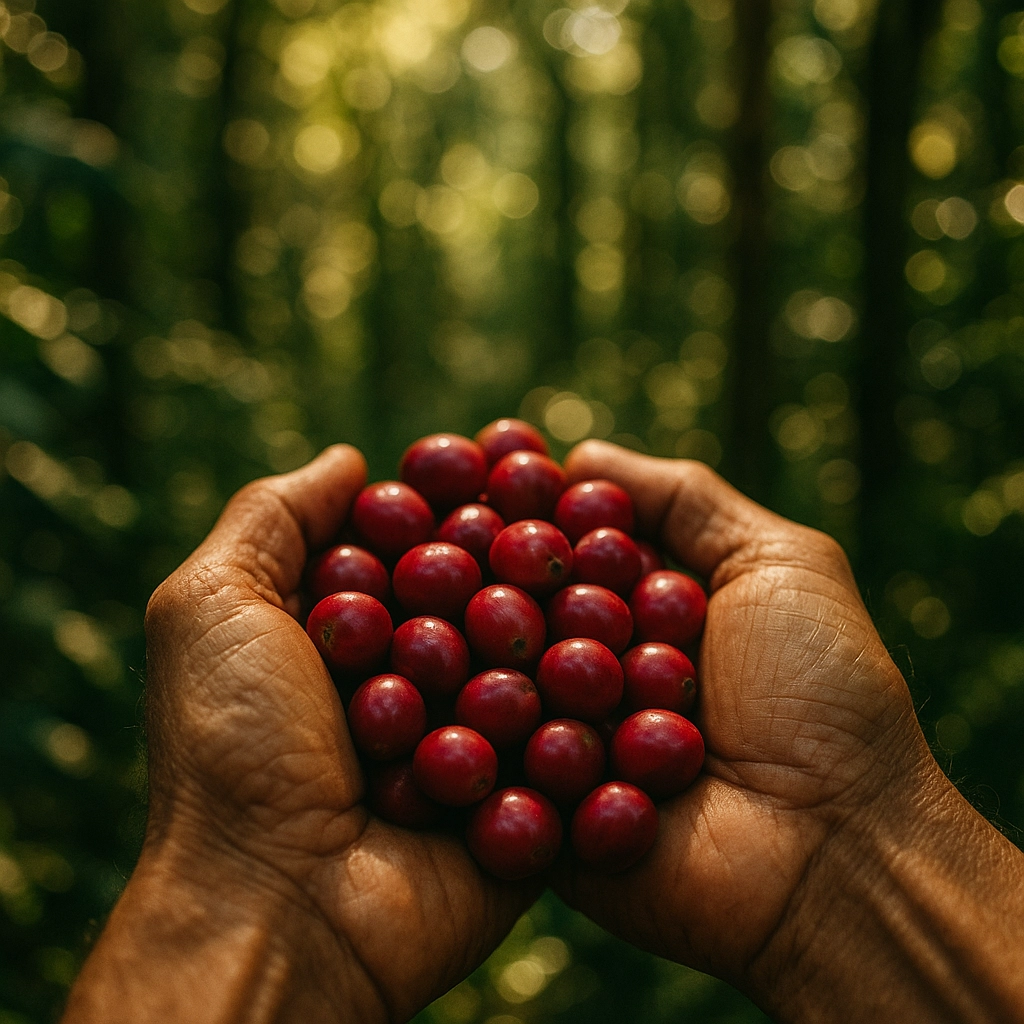Your morning coffee ritual might feel like a simple pleasure, but behind every cup lies a complex story of environmental impact that spans continents. With over 1,600 million cups of coffee consumed daily worldwide, our collective coffee habit has become one of the most significant agricultural forces shaping our planet's future.
At Gently Ground Coffee, we believe that understanding the true cost of our daily brew is the first step toward making more sustainable choices. Let's explore how your morning cup affects the environment and what we can all do to brew a better future.
The Hidden Environmental Cost of Your Morning Cup
When you think about your coffee's environmental impact, you might consider the disposable cup or the energy used by your coffee maker. But the real story starts much earlier in the supply chain. Producing just one pound of roasted coffee generates approximately 11 pounds of carbon emissions – equivalent to driving a car for 11 miles.
The carbon footprint varies dramatically depending on how you prepare your coffee. A simple 12-ounce black coffee produces about 0.258 kg of CO₂ emissions, while a creamy latte jumps to 0.844 kg due to the carbon-intensive dairy industry. If you're drinking one cup of black coffee each morning, you're contributing about 94 kg of CO₂ annually – roughly the same as burning 11 gallons of gasoline.
These emissions come from every stage of the coffee journey: farming practices, transportation across continents, roasting processes, packaging materials, and even your brewing method at home.
Deforestation: The Price of Coffee Expansion

One of coffee's most devastating environmental impacts is deforestation. Over the past three decades, coffee consumption has increased by 60%, driving massive forest clearing in coffee-growing regions. In Central America alone, 2.5 million acres of forest have disappeared to make room for coffee plantations.
This deforestation crisis has accelerated with the shift toward sun-tolerant coffee varieties. Traditional coffee farming used shade-grown methods, where coffee plants thrived under forest canopies alongside diverse wildlife. These biodiverse ecosystems supported hundreds of bird species, maintained soil health, and sequestered carbon naturally.
Modern sun-grown coffee farms, however, are essentially monocultures that require clearing entire forest ecosystems. Brazil, the world's largest coffee producer, continues expanding its operations, contributing to significant habitat loss and biodiversity decline. When forests disappear, countless species lose their homes, and stored carbon is released into the atmosphere, accelerating climate change.
The environmental consequences extend far beyond the immediate clearing. Without tree cover, soil erosion increases, water cycles are disrupted, and local climate patterns can shift dramatically.
Water Resources Under Pressure
Coffee production places enormous strain on our planet's water resources. The process of growing, processing, and washing coffee beans requires massive amounts of water – often in regions already facing water scarcity. This intensive water use can exacerbate drought conditions and compete with local communities' needs for clean water.
The pollution aspect is equally concerning. Conventional coffee farming relies heavily on synthetic fertilizers and pesticides, which inevitably seep into rivers and soil systems. This chemical runoff pollutes water sources, harms aquatic ecosystems, and can affect the health of nearby communities who depend on these water sources for drinking and agriculture.
Sun-grown coffee operations typically require even more chemical inputs than shade-grown alternatives, creating a cycle of environmental degradation that extends far beyond the coffee farm itself. The contamination can persist for years, affecting biodiversity and ecosystem health long after the chemicals are applied.
Climate Change: Coffee's Uncertain Future

Ironically, while coffee production contributes to climate change, the industry itself faces increasing threats from changing climate patterns. Rising temperatures, unpredictable rainfall, and emerging plant diseases like coffee leaf rust are already affecting coffee yields worldwide.
Scientists predict a dramatic shift in coffee-growing regions over the coming decades. By 2050, the amount of land suitable for coffee cultivation could shrink by 48% to 97% in key growing areas. This climate vulnerability affects both major coffee varieties – Arabica and Robusta – though in different ways.
Arabica coffee, prized for its complex flavors and comprising about 60% of global production, is particularly sensitive to temperature changes. As temperatures rise, suitable growing altitudes shift upward, often into protected forest areas or unsuitable terrain.
The economic impacts are already visible. Green coffee bean prices have been rising partly due to climate-related crop challenges, and this trend is likely to continue as suitable growing areas shrink.
Biodiversity Crisis in Coffee Regions
The environmental impact of coffee extends to a biodiversity crisis that threatens the very foundation of healthy ecosystems. Research shows that up to 60% of wild coffee species are at risk of extinction, pushed to the brink by deforestation and climate change.
This biodiversity loss creates a dangerous feedback loop. When ecosystems lose their natural diversity, they also lose essential services like natural pest control, pollination, and soil health maintenance. Coffee farms become increasingly dependent on artificial inputs to replace these lost natural services, further compounding environmental problems.
Traditional shade-grown coffee farms support an incredible array of wildlife – some plantations host over 150 bird species. When these biodiverse systems are converted to sun-grown monocultures, entire food webs collapse, affecting everything from soil microorganisms to migratory birds.
Making Sustainable Choices That Matter

Despite these challenges, there are meaningful ways to reduce coffee's environmental impact, and every choice matters when multiplied across millions of coffee drinkers worldwide.
Choose Shade-Grown and Organic: Shade-grown coffee supports biodiversity while requiring fewer chemical inputs. These farms can host 50% more bird species than sun-grown operations and help maintain forest ecosystems. Organic certification ensures that synthetic pesticides and fertilizers aren't polluting water sources and soil.
Support Fair Trade and Direct Trade: These certifications often go hand-in-hand with sustainable farming practices and ensure that farmers receive fair compensation for implementing environmentally friendly methods.
Reduce Waste: Simple changes like using reusable cups, buying whole beans instead of individual pods, and composting coffee grounds can significantly reduce your coffee footprint. A reusable cup can eliminate hundreds of disposable cups annually.
Consider Your Brewing Method: Some brewing methods are more energy-efficient than others. Manual brewing methods like pour-over or French press typically use less energy than espresso machines or electric drip brewers.
Buy Local When Possible: While coffee itself can't be grown everywhere, choosing locally roasted coffee reduces transportation emissions from the roasting facility to your cup.
The Path Forward
The relationship between coffee and environmental sustainability doesn't have to be adversarial. Innovative farming practices, improved processing methods, and conscious consumer choices can help create a more sustainable coffee industry.
Some exciting developments include regenerative agriculture practices that actually improve soil health and carbon sequestration, water-efficient processing methods, and renewable energy adoption in coffee processing facilities.
At Gently Ground Coffee, we're committed to sourcing our beans responsibly and supporting farming practices that protect both the environment and the livelihoods of coffee growers. We believe that great coffee and environmental stewardship can go hand in hand.
Your daily coffee ritual connects you to a global network of farmers, ecosystems, and communities. By making informed choices about the coffee you buy and how you brew it, you're casting a vote for the kind of coffee industry you want to support – one that can continue providing excellent coffee while protecting the planet that makes it possible.
The next time you savor that perfect cup, remember that small choices in your kitchen can contribute to big changes in coffee-growing regions around the world. Together, we can ensure that future generations will still be able to enjoy the ritual, comfort, and community that coffee brings to our lives.




